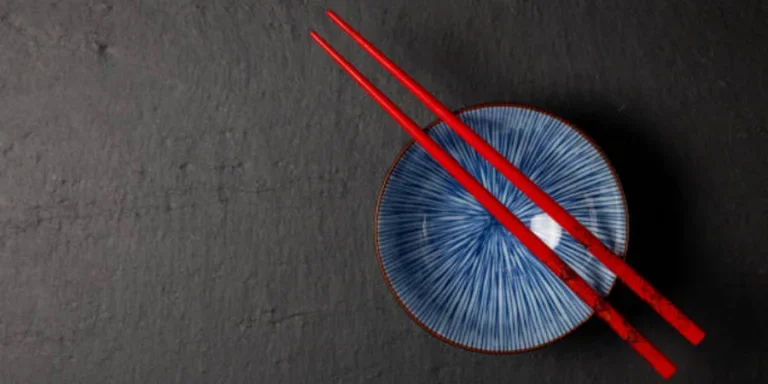In the realm of dining and culinary arts, chopsticks have transcended their traditional boundaries to become a global utensil of choice. Originating from ancient Asian cultures, these slender tools have seen a remarkable journey, adapting to various dining etiquettes and styles across the world. Today, they are not just a reflection of cultural heritage but also a symbol of the fusion of global culinary practices. Their design, ranging from simplistic wooden pairs to elegant, modernized versions, mirrors the diversity and innovation in the industry. As such, chopsticks hold a unique place in the culinary world, offering both functional use in various cuisines and a touch of cultural sophistication to dining experiences. This integration of tradition with contemporary design trends makes chopsticks an essential item in the global culinary toolkit.
Table of Contents
1. Chopstick varieties and their applications
2. Analysis of the chopstick market in 2024
3. Key considerations for selecting chopsticks
4. Leading chopstick models and their distinct features
5. Conclusion
Chopstick varieties and their applications

Chopsticks, an integral part of global dining culture, present a fascinating study in diversity and functionality. These eating tools, deeply rooted in Asian traditions, have evolved into various forms, each reflecting unique cultural and material nuances.
Cultural and material differences in chopstick design
The design of chopsticks varies significantly across different cultures. In Japan, chopsticks, or ‘hashi’, are traditionally made of bamboo or wood, characterized by their tapered, pointed tips ideal for picking up delicate pieces of sushi or sashimi. These chopsticks are often shorter, reflecting the Japanese dining style of eating close to the table. The Chinese variant, ‘kuai zi’, is typically longer, with blunter ends suitable for reaching into communal dishes, a practice common in Chinese dining etiquette. These are often made from a range of materials, including bamboo, wood, and in contemporary settings, even plastic and stainless steel. The Korean ‘jeotgarak’, traditionally crafted from metal, are flat and have a unique rectangular shape, a design that dates back to ancient royal courts. The material choice here is not just about aesthetics but also hygiene, as metal is easier to clean and less prone to bacterial growth compared to wood.
Utilitarian aspects: from dining to cooking

Beyond their cultural significance, chopsticks serve practical utilitarian functions that extend into the realm of cooking. In many Asian kitchens, chopsticks are not just for eating but are essential cooking tools. Their slender form and precise tips make them ideal for tasks requiring delicacy and precision, such as flipping vegetables in a stir-fry or carefully placing garnishes. Wooden and bamboo chopsticks are particularly favored in cooking for their ability to handle high temperatures without conducting heat, ensuring safety and comfort during cooking. The longer Chinese chopsticks provide an extended reach, proving advantageous in deep pots and woks, while the sturdiness of Japanese bamboo chopsticks lends itself well to tasks requiring more control and finesse.
These variations in chopstick design and material are not merely incidental but are reflective of the deep cultural practices and preferences of different regions. For online retailers and business professionals in the culinary industry, understanding these nuances is crucial. It aids in catering to a diverse clientele, each with its own set of preferences and dining traditions. The selection of chopsticks in a portfolio can, therefore, be a testament to a brand’s awareness and respect for global culinary diversity. As chopsticks continue to be a staple in kitchens and dining tables worldwide, their evolving design and application stand as a symbol of cultural fusion and culinary innovation.
Analysis of the chopstick market in 2024
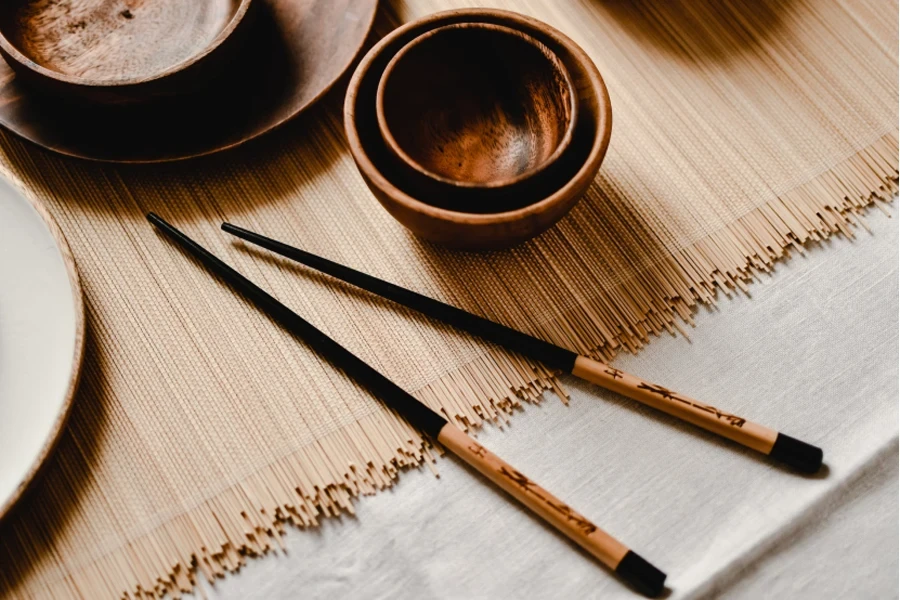
The chopstick market in 2024 presents a dynamic blend of tradition and innovation, influenced by shifting consumer preferences and cultural nuances.
Current market trends and consumer preferences
In recent years, the chopstick market has experienced significant growth, primarily driven by the global popularity of Asian cuisine. Factors such as globalization, international travel, and cultural exchange have contributed to the rising demand for chopsticks. The market’s expansion is also fueled by growing awareness of sustainable and eco-friendly alternatives to disposable plastic cutlery. Chopsticks made from bamboo or wood have seen an uptick in preference, aligning with the global shift towards environmentally conscious choices.
In emerging economies, the increase in disposable income is expected to propel the demand for chopsticks. As dining out and ordering Asian cuisine become more accessible, chopsticks are becoming more prevalent in everyday dining experiences. The fusion of cuisines and the growing appreciation of Asian food among non-Asian populations are also augmenting this demand.
Manufacturers are responding to these trends by introducing innovative chopstick designs. These range from chopsticks made of sustainable materials to those featuring customized designs and technological integrations, such as temperature sensors or LED lights. Such innovations are not only enhancing the functional aspect of chopsticks but also adding an element of aesthetic appeal.
Modern preferences influencing chopstick production and design
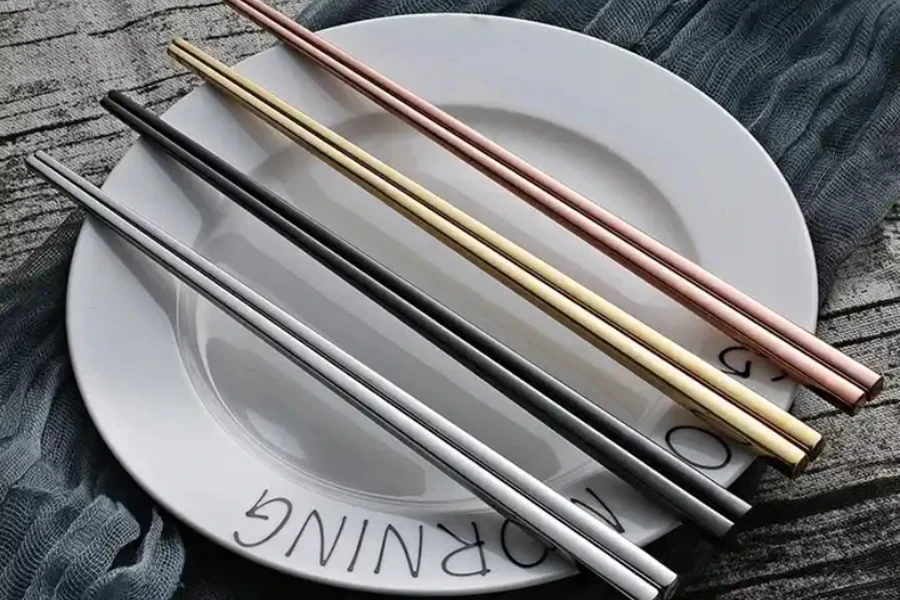
The cultural influence on chopstick design and production is profound. The increasing preference for eco-friendly chopsticks made from bamboo or biodegradable materials reflects a shift in consumer consciousness about environmental impacts. This trend is particularly noticeable in Western countries, where the adoption of chopsticks is growing alongside a heightened awareness of sustainability.
The market is also seeing a rise in the popularity of designer and customized chopsticks. These products cater to a segment of consumers seeking unique and aesthetically pleasing dining utensils. This trend highlights the blend of traditional utility with modern design sensibilities, making chopsticks not just a tool for eating but a statement of personal style and cultural appreciation.
With these trends, the chopstick market in 2024 is expected to continue its growth trajectory. The demand for Asian cuisine, increasing disposable income, and the shift towards eco-friendly products are key drivers. The introduction of innovative chopstick designs is poised to further fuel the market’s expansion, indicating a bright future for this segment in the culinary industry.
Key considerations for selecting chopsticks
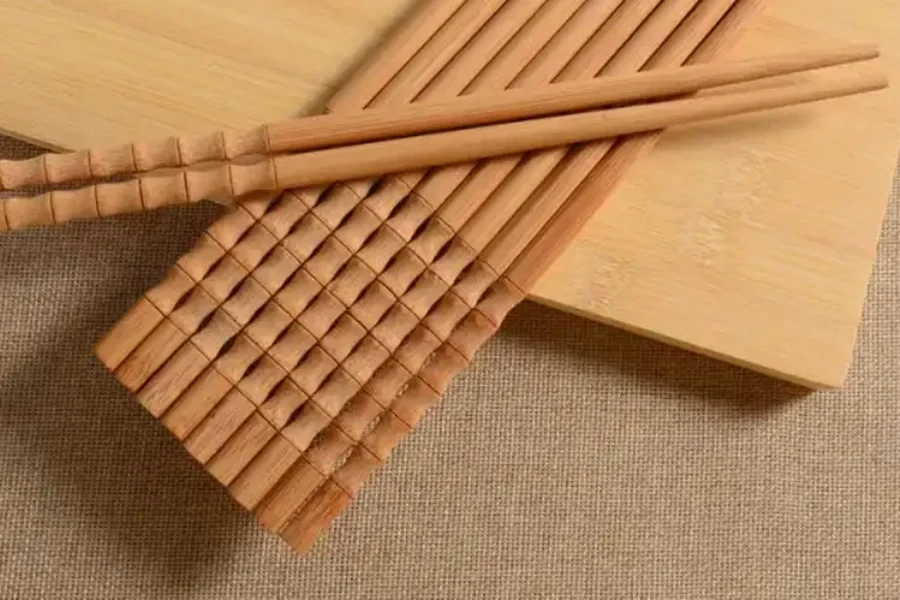
In the contemporary chopsticks market, key considerations for selection focus on material, durability, ergonomics, design, and environmental and health aspects. These elements are crucial for business professionals and online retailers in making informed decisions about their product offerings.
Material and durability: wood, bamboo, metal, and more
In the selection of chopsticks, a key consideration for business professionals and online retailers is the material and durability of the products. Different materials offer unique benefits and challenges, affecting their suitability for various uses and consumer preferences.
Wooden Chopsticks: Traditional and widely used, wooden chopsticks are favored for their natural feel and lightweight design. However, they can be prone to splintering and may absorb flavors and odors over time. Their porous nature raises hygiene concerns, as they can harbor bacteria if not properly maintained. Despite these drawbacks, wooden chopsticks remain popular due to their affordability and the comfort they offer during use.
Bamboo Chopsticks: Similar to wooden chopsticks in feel and appearance, bamboo chopsticks are more sustainable and environmentally friendly. Bamboo is a highly renewable resource that grows quickly, making it an eco-conscious choice. These chopsticks are also resistant to heat and do not absorb odors as easily as wood. However, like wooden chopsticks, bamboo can wear down over time and may not be as durable as metal options.
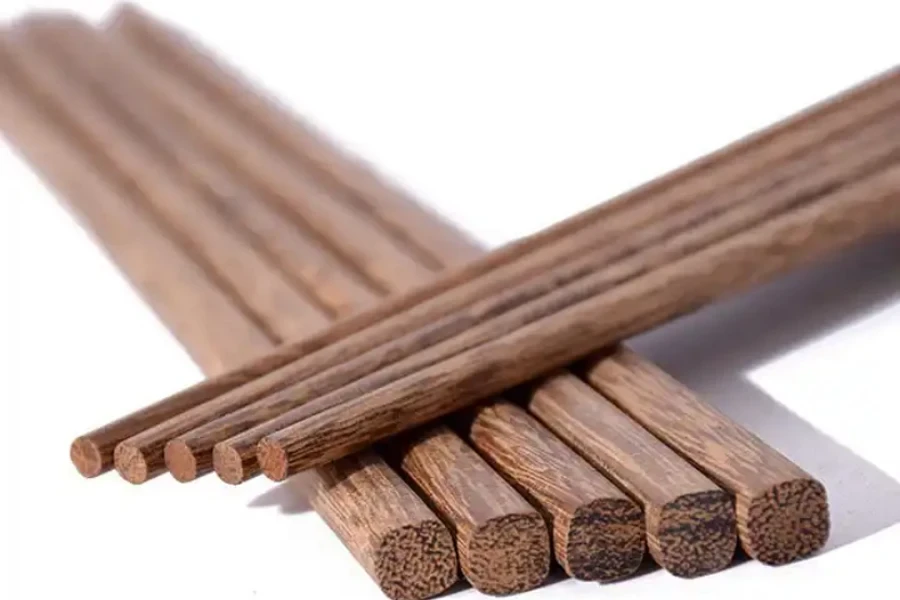
Metal Chopsticks: Stainless steel chopsticks have gained popularity due to their durability and hygienic properties. They are non-porous, preventing the absorption of bacteria, odors, and flavors. Metal chopsticks are also dishwasher safe, making them easy to clean and maintain. Their heat-resistant nature makes them ideal for cooking as well as dining. However, metal chopsticks can be more slippery than wood or bamboo, which may affect their ease of use for some consumers.
Plastic Chopsticks: Often used in restaurants for their affordability and ease of cleaning, plastic chopsticks are durable and resistant to bacteria. However, they are not as environmentally friendly as wood or bamboo and can sometimes feel less comfortable to use due to their weight and texture.
Composite Materials: Recent innovations have introduced chopsticks made from composite materials, which aim to combine the best properties of traditional materials. These can include a blend of wood and plastic, offering the natural feel of wood with the durability and hygiene of plastic. Composite chopsticks are an emerging market segment, appealing to consumers looking for a balance between traditional aesthetics and modern functionality.
When selecting chopsticks for retail, it is essential to consider these material properties, as they directly impact the user experience and the product’s lifespan. Durability, hygiene, environmental impact, and user comfort are all critical factors that vary depending on the material used. For online retailers and business professionals, understanding these nuances allows for a more informed and strategic approach to product selection, catering to diverse consumer needs and preferences in the chopsticks market.
Ergonomics and design: comfort and efficiency in use

Ergonomics and design play a crucial role in the selection of chopsticks, particularly concerning user comfort and efficiency. Recent innovations and patent applications in chopstick design offer insightful examples of how ergonomics are being prioritized in chopstick manufacturing.
Ergonomic Design Innovations: A patent application for “Ergonomic Chopsticks” (US20210059445A1) showcases the integration of low-profile protrusions on chopsticks. These are strategically placed to provide tactile feedback on the user’s fingers, guiding them to adopt a proper chopstick grip. This design allows for an extension of chopstick tips over an angle of 40 degrees, facilitating ease in grasping large food items and ensuring sufficient compression force for firm holding. Such ergonomic features enable users to manipulate chopsticks with dexterity, similar to the principles of a planetary gear train.
Standard Grip and Alternating Motion: The patent reveals that the standard grip of chopsticks is not static but involves a fluid motion of fingers pushing, pulling, and rolling the chopsticks. This motion requires the chopsticks to move back and forth between two configurations – wide-open and closed postures. Ergonomic designs aim to facilitate this range of motion without hindering the user’s natural movements.
Finger Dynamics and Chopstick Manipulation: Understanding finger dynamics is crucial in ergonomic chopstick design. The alternating motion between wide-open and closed postures changes not just the pitch angle but also rolls the chopsticks around their longitudinal axis. Ergonomic designs focus on allowing the thumb, index, and middle fingers to maintain a firm grip on the chopstick for this roll, reducing the need for excessive pressure throughout the motion.
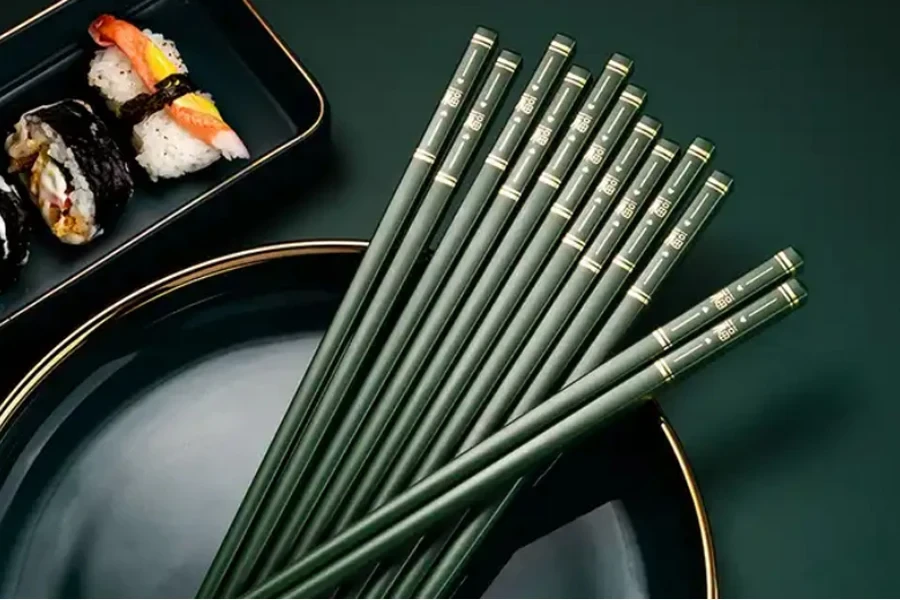
Material and Shape Considerations: The material and shape of chopsticks significantly influence their ergonomic efficiency. For instance, square chopsticks provide edges that allow better grip and control compared to round ones. Materials like wood and bamboo offer a natural feel but may require more pressure to manipulate, whereas metal chopsticks, being slippery, might challenge the dexterity of users.
Customization for Individual Needs: The ergonomic design of chopsticks also considers variations in hand sizes and abilities. For example, chopsticks with larger, more tactile surfaces might be more suitable for children or individuals with conditions like arthritis, who may struggle with finer motor control.
In summary, the key to selecting the right chopsticks lies in understanding the intricate balance between material, design, and the natural dynamics of hand movements. Innovations in ergonomic design, as evidenced in recent patent applications, are geared towards enhancing the comfort and efficiency of chopstick use, making them more accessible and easier to use for a broader range of individuals. For business professionals and online retailers, offering chopsticks that align with these ergonomic principles can significantly enhance the dining experience for their customers.
Environmental and health aspects: sustainability and safety concerns
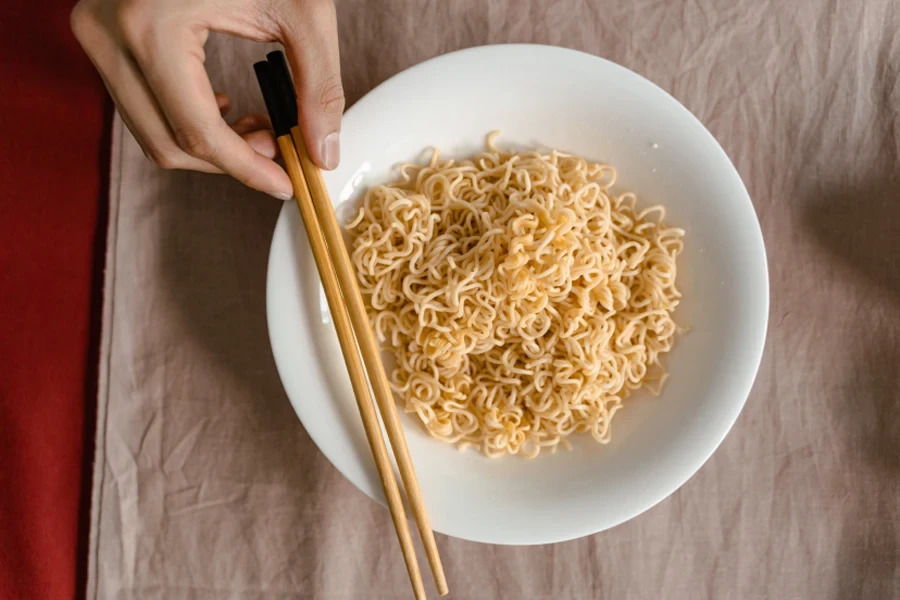
The environmental and health aspects of chopsticks, particularly concerning sustainability and safety, are increasingly crucial in the selection process for both consumers and retailers. This importance is underscored by the growing awareness of the environmental impact of disposable chopsticks and the health implications of materials used in their production.
Environmental Impact of Disposable Chopsticks: The production of disposable chopsticks, primarily made of wood and bamboo, poses significant environmental concerns. It’s estimated that billions of pairs of disposable chopsticks are produced annually, leading to considerable deforestation and environmental degradation. This unsustainable practice not only impacts forests but also contributes to broader ecological issues, such as increased carbon emissions and biodiversity loss.
Health Concerns with Disposable Chopsticks: Disposable chopsticks, often made from bleached wood and bamboo, can pose health risks. The bleaching process may involve harmful chemicals that could leach into food. Moreover, the porous nature of wood and bamboo can harbor bacteria, raising hygiene concerns, especially if these chopsticks are not properly sterilized.
Sustainability of Reusable Chopsticks: Reusable chopsticks made from sustainable materials like stainless steel, certain plastics, or responsibly sourced wood and bamboo, offer a more environmentally friendly alternative. Stainless steel chopsticks, for instance, are durable, recyclable, and do not require the constant cutting down of trees. Similarly, bamboo, when sourced responsibly, can be a sustainable option due to its rapid growth and biodegradable nature.
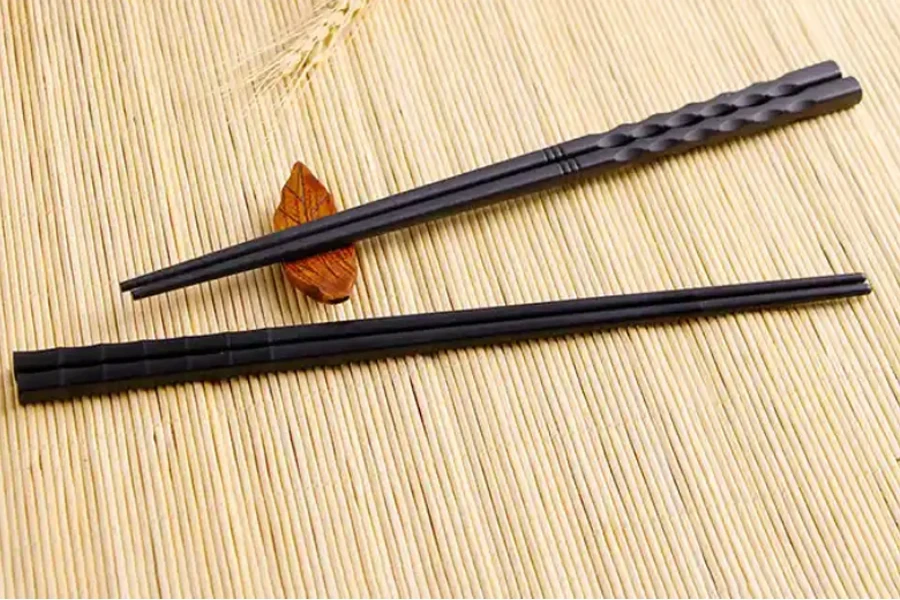
Health Aspects of Chopstick Materials: The safety of chopstick materials is a paramount concern. For example, high-quality stainless steel is non-toxic and does not leach chemicals into food, making it a safe choice for consumers. On the other hand, low-quality plastics may contain harmful chemicals like BPA, which can pose health risks. Thus, it’s crucial for retailers to source chopsticks made from safe, non-toxic materials.
Eco-friendly Innovations: The market is seeing a rise in eco-friendly innovations, such as chopsticks made from recycled materials or those designed to be biodegradable. These innovations not only address environmental concerns but also cater to the growing consumer demand for sustainable dining options.
Regulatory Compliance: Adherence to health and safety regulations is crucial. Retailers need to ensure that their products comply with relevant food safety standards and regulations. This includes ensuring that chopsticks are free from harmful chemicals and are safe for food contact.
In conclusion, when selecting chopsticks for retail, it’s essential to consider both the environmental impact and the health aspects of the products. Opting for sustainable, safe, and responsibly made chopsticks can appeal to environmentally conscious consumers and align with global efforts to reduce ecological footprints and promote public health. For business professionals, this approach not only meets consumer demand but also supports a sustainable and ethical business model.
Leading chopstick models and their distinct features
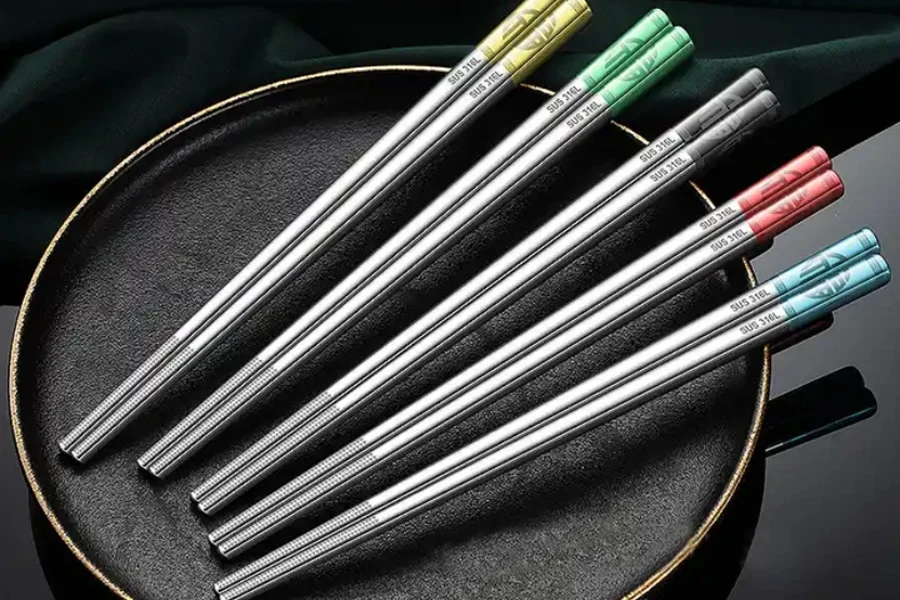
The landscape of chopstick models in 2024 reveals a fascinating blend of tradition and modern innovation, offering a wide array of options for both personal and professional use.
Review of popular chopstick models in 2024
In 2024, the market for chopsticks is characterized by a fascinating array of models, each distinct in its design and functionality. This diversity reflects the evolving preferences and needs of consumers, combining traditional craftsmanship with modern innovation.
Crate & Barrel Striped Bamboo Chopsticks: These chopsticks are a blend of traditional design and contemporary appeal. Made from bamboo, a material known for its lightweight and strength, they feature a classic striped pattern that adds to their visual charm. The grooves at the tips are a thoughtful addition, enhancing grip and making it easier to handle a variety of foods, from slippery noodles to small grains of rice. While bamboo is generally recommended for hand washing, these chopsticks have shown resilience in dishwasher tests, making them a practical choice for both home and restaurant use.
Kent Wang Ebony Chopsticks: Carved from sustainably sourced ebony, these chopsticks are a testament to fine craftsmanship. Ebony is prized for its density and smooth texture, making these chopsticks not only visually stunning but also durable. Their understated elegance makes them suitable for formal dining settings. However, the natural wood requires careful maintenance to preserve its luster and finish, as exposure to the harsh conditions of a dishwasher can lead to fading.
Pearl River Red Wood Chopsticks: Ideal for both cooking and dining, these chopsticks are made from ironwood, known for its resilience and heat resistance. Their robust construction makes them a reliable tool in the kitchen, capable of withstanding the rigors of high-temperature cooking. The square shape of the handle provides a comfortable grip, reducing hand fatigue during prolonged use. These chopsticks strike a balance between functionality and aesthetics, making them a versatile addition to any kitchen.
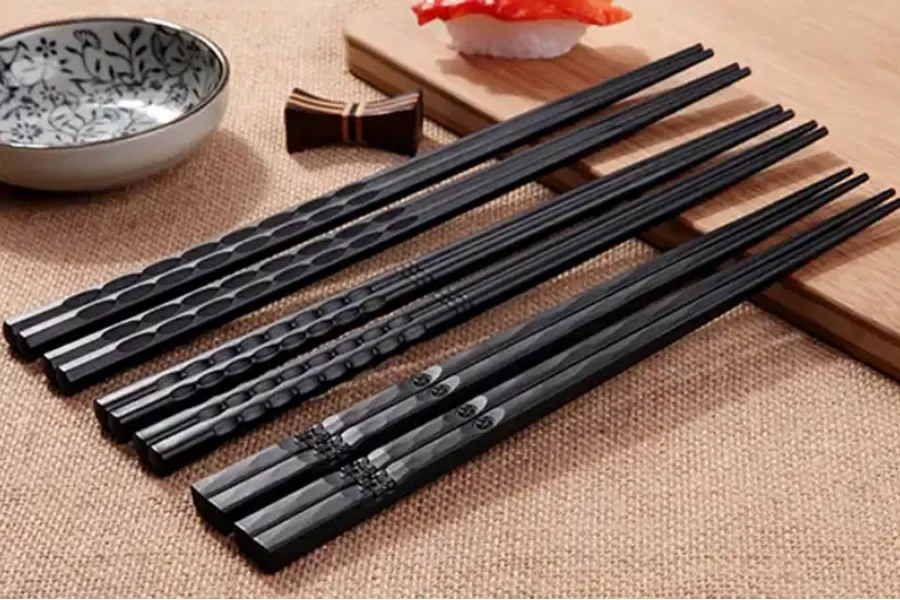
Korin Black Melamine Hexagonal Chopsticks: These chopsticks are a fine example of modern material application in traditional utensils. Made from melamine, they are exceptionally durable and resistant to staining and heat. The hexagonal shape of the handle is a design innovation that combines aesthetic appeal with ergonomic benefits, preventing the chopsticks from rolling off tables and providing a comfortable grip. Their dishwasher-safe nature makes them an excellent choice for busy restaurants and households.
Korin Acrylic Twisted Clear Chopsticks: These chopsticks stand out for their unique twisted design and clear acrylic construction. The transparent material gives them a contemporary and stylish appearance, making them suitable for modern dining settings. The acrylic used is durable and resistant to breakage, ensuring longevity. While they are dishwasher safe, care should be taken to avoid prolonged exposure to highly pigmented foods, which can stain the clear material.
Each of these chopstick models reflects the diverse preferences of the 2024 market, catering to a range of needs from everyday dining to special occasions, and from traditional to contemporary aesthetics. Their distinct features and materials showcase the evolution and innovation in chopstick design, offering consumers a variety of choices to enhance their dining experience.
Comparison of features: traditional vs. modern innovations
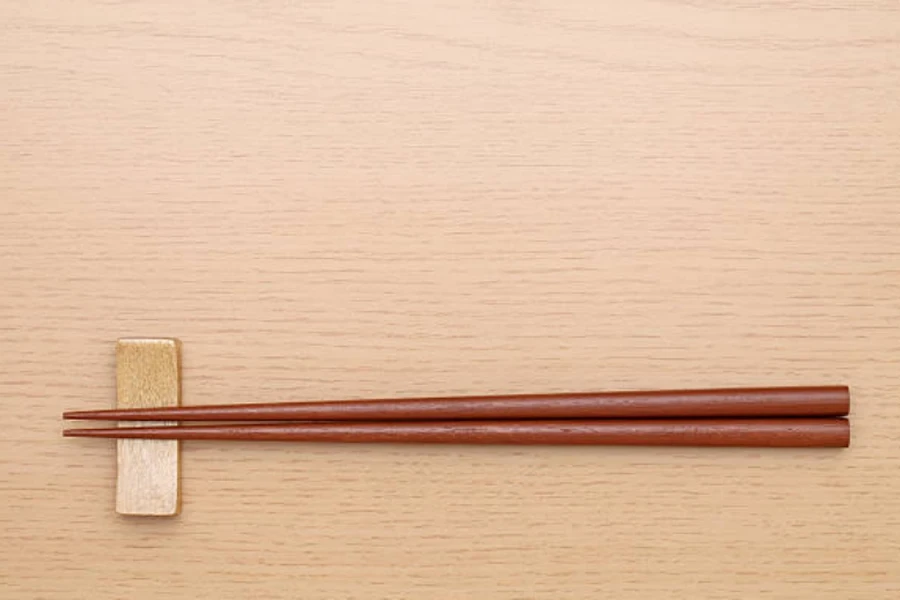
In the comparison of traditional versus modern chopsticks, the diversity in features across various models reflects a blend of heritage craftsmanship and contemporary innovation. Here’s an in-depth comparison of the features of the five chopstick models discussed earlier:
Material Quality and Aesthetic Appeal:
Traditional: The Crate & Barrel Striped Bamboo and Kent Wang Ebony chopsticks represent the essence of traditional materials. Bamboo, known for its lightweight and eco-friendliness, offers a natural, earthy feel, while ebony stands out for its luxurious, dense texture and deep color. These materials are synonymous with classic elegance and a direct connection to chopstick heritage.
Modern: The Korin Black Melamine Hexagonal and Acrylic Twisted Clear chopsticks showcase modern materials like melamine and acrylic. Melamine offers unparalleled durability and practicality, ideal for rigorous daily use. Acrylic, on the other hand, brings a contemporary twist with its clear, twist design, making a style statement while maintaining functionality.
Durability and Maintenance:
Traditional: The traditional wooden and bamboo chopsticks, while aesthetically pleasing, require more careful maintenance. They are not typically dishwasher-safe and can be prone to wear and splintering over time. Regular oiling and hand washing are recommended to preserve their beauty and longevity.
Modern: Modern materials like melamine and acrylic are designed for convenience. These materials are generally dishwasher-safe, making them easier to maintain. They resist staining, do not absorb flavors, and are less prone to wear, representing a practical choice for both busy households and commercial settings.

Design and Ergonomics:
Traditional: The traditional chopsticks tend to focus more on aesthetics than ergonomics. The Kent Wang Ebony chopsticks, for example, boast a refined design but may require a period of adjustment for comfortable use. The Crate & Barrel Striped Bamboo chopsticks, while more ergonomic than the ebony ones, still follow a conventional design.
Modern: The modern chopsticks place a significant emphasis on user comfort. The hexagonal design of the Korin Black Melamine chopsticks, for instance, prevents rolling and ensures a stable grip, while the twisted design of the Korin Acrylic chopsticks offers a unique tactile experience and an easy grip, catering to a broader range of users, including those who may find traditional designs challenging to handle.
Environmental Impact:
Traditional: Bamboo, as seen in the Crate & Barrel Striped Bamboo chopsticks, is a highly renewable resource, making it an environmentally friendly choice. However, the ebony used in the Kent Wang chopsticks, while sustainable, may not be as eco-friendly due to its rarity and the slow growth rate of ebony trees.
Modern: The use of synthetic materials like melamine and acrylic raises questions about environmental impact, particularly regarding biodegradability and plastic use. However, their durability and longevity can be seen as environmentally beneficial in terms of reducing waste and frequent replacement.
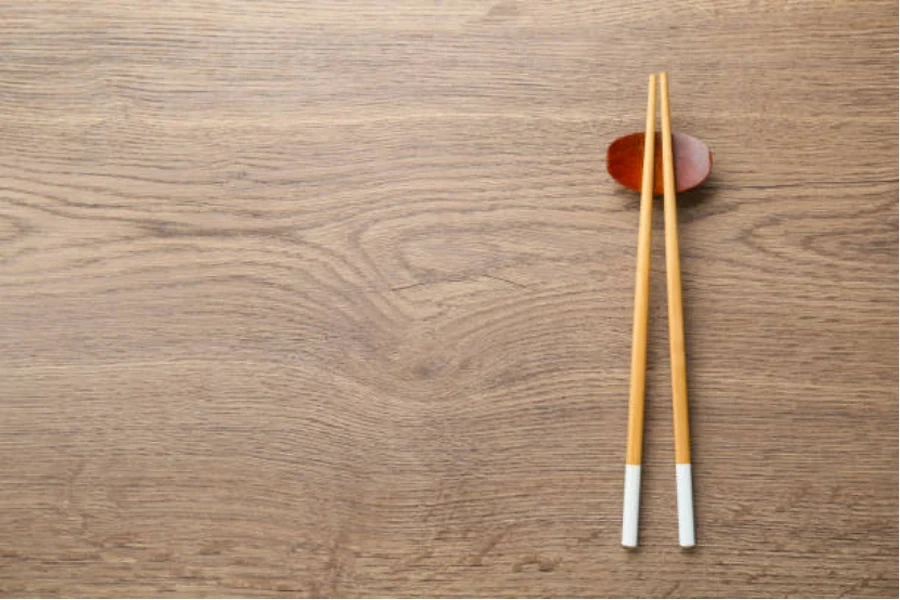
Cultural Significance:
Traditional: Traditional chopsticks like the bamboo and ebony models carry significant cultural heritage, reflecting the history and artistry of chopstick use across generations. They serve not just as utensils but as cultural symbols.
Modern: While modern chopsticks may lack the deep cultural roots of traditional ones, they represent the global evolution of chopstick design. They reflect current trends and the fusion of traditional utility with contemporary lifestyles.
In conclusion, the comparison between traditional and modern chopstick models reveals a spectrum of choices tailored to different preferences and needs. Whether it’s the classic charm of wood and bamboo or the practicality and innovative design of modern materials, each model offers unique benefits. This diversity underscores the ongoing evolution of chopsticks, blending tradition with modernity to cater to the varied tastes and requirements of users in 2024.
Conclusion
The selection of chopsticks in 2024 is a reflection of the fusion between tradition and modernity, catering to a diverse range of preferences and functional needs. From the classic elegance of bamboo and ebony to the practicality and innovation of melamine and acrylic, each model offers unique attributes. The choice hinges on balancing material quality, durability, ergonomics, environmental impact, and cultural significance. For business professionals and online retailers, understanding these varied facets is key to providing options that resonate with consumers’ evolving tastes and dining experiences in today’s dynamic market.
